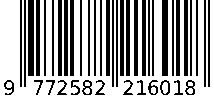
International Journal For Multidisciplinary Research
E-ISSN: 2582-2160
•
Impact Factor: 9.24
A Widely Indexed Open Access Peer Reviewed Multidisciplinary Bi-monthly Scholarly International Journal
Home
Research Paper
Submit Research Paper
Publication Guidelines
Publication Charges
Upload Documents
Track Status / Pay Fees / Download Publication Certi.
Editors & Reviewers
View All
Join as a Reviewer
Get Membership Certificate
Current Issue
Publication Archive
Conference
Publishing Conf. with IJFMR
Upcoming Conference(s) ↓
WSMCDD-2025
GSMCDD-2025
AIMAR-2025
Conferences Published ↓
ICCE (2025)
RBS:RH-COVID-19 (2023)
ICMRS'23
PIPRDA-2023
Contact Us
Plagiarism is checked by the leading plagiarism checker
Call for Paper
Volume 7 Issue 4
July-August 2025
Indexing Partners



















Bangladeshi English Literature: New Narratives of Changing Social Milieu of a Newborn Nation
| Author(s) | Mohammed Shamsul Hoque, Tahsina Shabnam, Abu Sayed Md. Mahmudul Haque C |
|---|---|
| Country | Bangladesh |
| Abstract | The development of Bangladeshi English literature is deeply rooted in the colonial history of Bengal and has evolved significantly in the post-independence era to reflect the socio-political transformations of Bangladesh. This study examines the works of prominent Bangladeshi English writers such as Kaiser Haq, Tahmima Anam, and Neamat Imam, analyzing how their narratives capture the nation's changing social milieu. Employing post-colonial theory, ecocriticism, and concepts of hybridity and nationalism, the research delves into the thematic preoccupations of these authors, such as identity, political power, and cultural transformation. Through close readings, historical contextualization, and discourse analysis, key findings reveal that these writers critique the lingering effects of colonialism, explore the complexities of post-independence nationalism, and address environmental concerns. Their works contribute to global literary discourses by offering nuanced perspectives on the socio-political and ecological challenges faced by a newborn nation. |
| Keywords | Bangladeshi English Literature, Postcolonial Literature, Nationalism, Identity, Eco-criticism |
| Published In | Volume 7, Issue 1, January-February 2025 |
| Published On | 2025-02-11 |
| DOI | https://doi.org/10.36948/ijfmr.2025.v07i01.35315 |
| Short DOI | https://doi.org/g84z6s |
Share this

E-ISSN 2582-2160
CrossRef DOI is assigned to each research paper published in our journal.
IJFMR DOI prefix is
10.36948/ijfmr
Downloads
All research papers published on this website are licensed under Creative Commons Attribution-ShareAlike 4.0 International License, and all rights belong to their respective authors/researchers.

